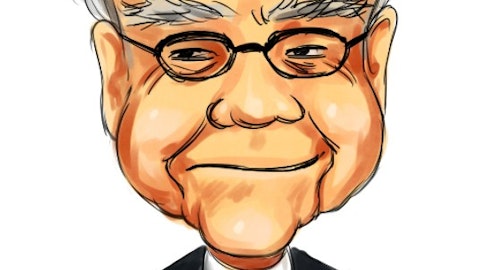
Buffett wasn’t the only investor who thought that The Bank of New York Mellon Corporation, which currently has a market capitalization of $28 billion, was a good stock to own during the second quarter. Marty Whitman’s Third Avenue Management owned 9.5 million shares, which was a small decrease from the previous quarter but still made it the fourth largest stock position in the fund’s portfolio according to its 13F. The largest position out of all the notable investors in our 13F database belonged to Southeastern Asset Management, run by Mason Hawkins; Southeastern’s stake of 44 million shares was valued at nearly $1 billion (find more stocks this fund is investing a billion dollars in).
While investors bought in to the stock during the second quarter, the performance of its business was not very good. Revenue and earnings both fell compared to the second quarter of 2011, and net income fell dramatically (by 37%). The banking industry is facing challenges, and some of these challenges may dissipate over time, but we still do not like to see companies with shrinking businesses. Bank of New York Mellon trades at a trailing P/E of 13 and a P/B ratio of 0.8. Wall Street analysts think that the bank will halt and reverse the decline in its business, with consensus earnings per share for 2013 coming in at $2.50 (compared to $2.23 for 2012). As a result, Bank of New York Mellon’s forward P/E is 10. The stock pays a moderate dividend yield of 2.3%.
Barclays PLC (NYSE: BCS) and State Street Corporation (NYSE:STT) are about the same market capitalization as The Bank of New York Mellon Corporation and operate in similar businesses, so we would say that they make for good peers. Barclays, which did terribly last quarter (its revenue fell 18% compared to the same period in the previous year, and its earnings fell 95%) trades at 18 times trailing earnings. The sell-side considers this performance an aberration, but the market is more skeptical: consensus earnings per share estimates for next year are $2.52, but the stock only trades at 6 times that figure. It also trades at half the book value of its equity. We’re a bit tempted to get into the stock, thinking that it may have been beaten down by poor sentiment from the LIBOR scandal and now trades away from its fundamental value, but would prefer to hold off on any moves for now. State Street saw a considerably more modest decline in its business than Barclays did, with the company’s earnings falling only 5%. Its trailing P/E is 12 and its P/B is 1.1, with the forward earnings multiple coming in at 10. So it trades at about the same valuation multiples as Bank of New York Mellon. JPMorgan Chase & Co. (NYSE:JPM) is considerably larger at a market cap of $157 billion, but other than that it is a comparable company as well. It carries trailing and forward P/E multiples of 10 and 8, respectively. Its P/B also comes in at 0.8 and its dividend yield is slightly higher, at 3%. JPMorgan Chase also ranks among the ten most popular financial stocks among hedge funds. It is not as focused on investment management as the other peers, but we think it probably makes for the best value.



